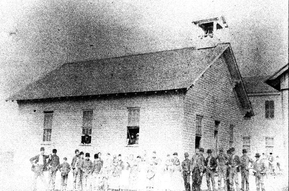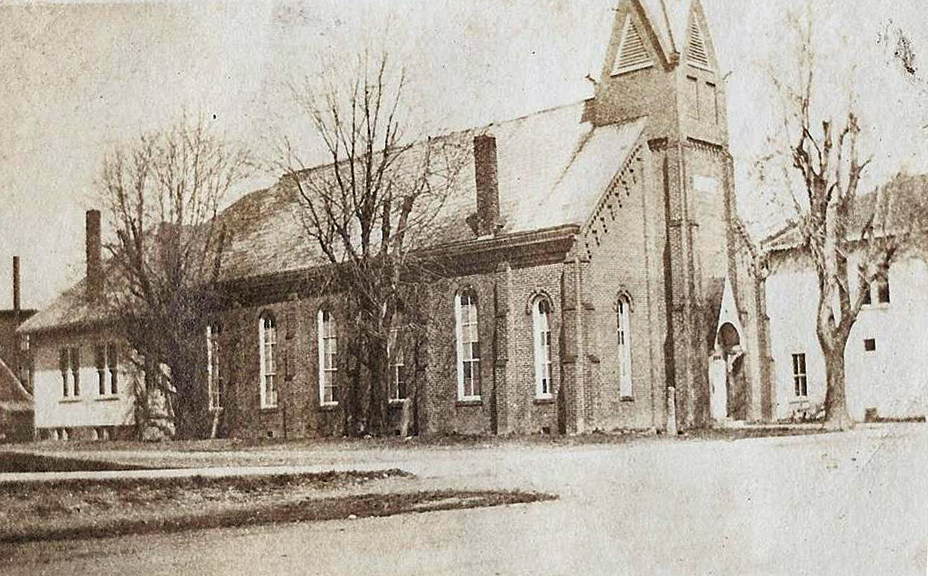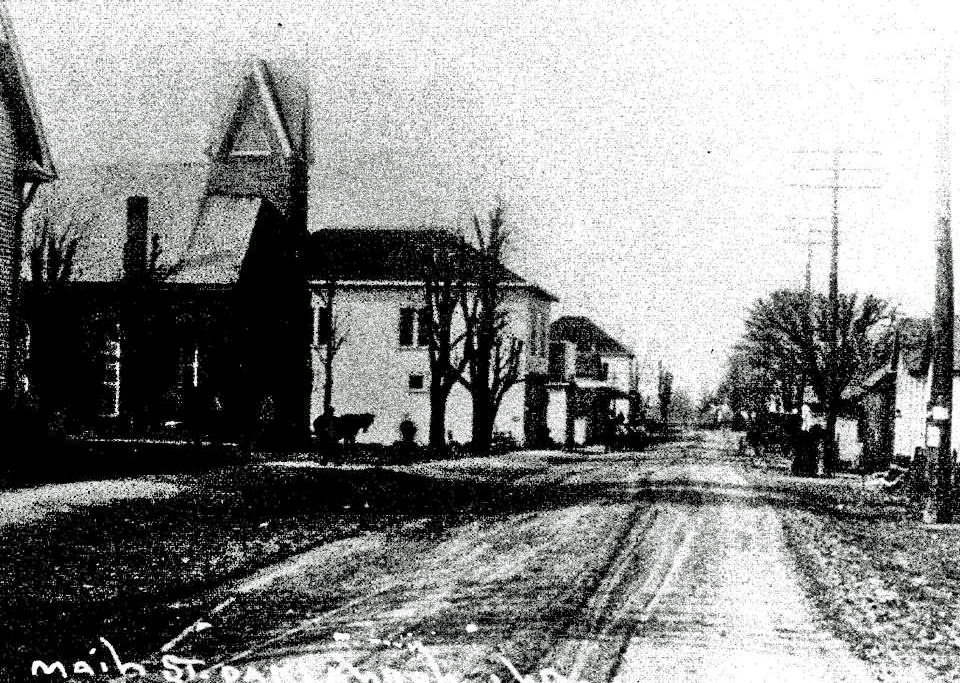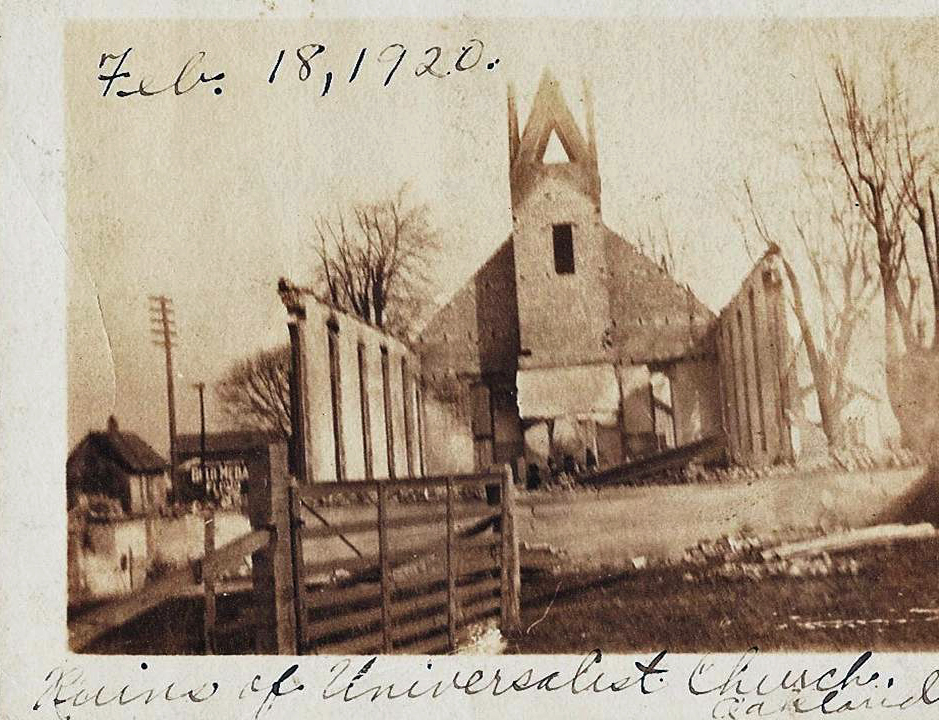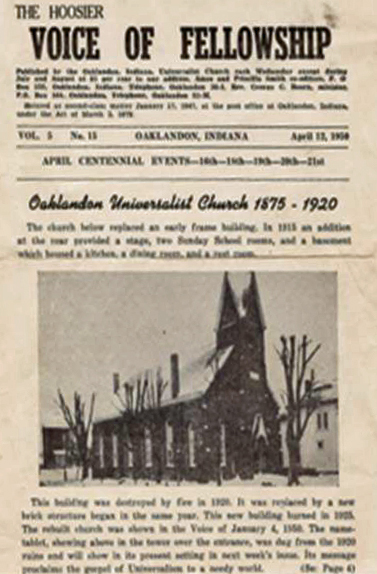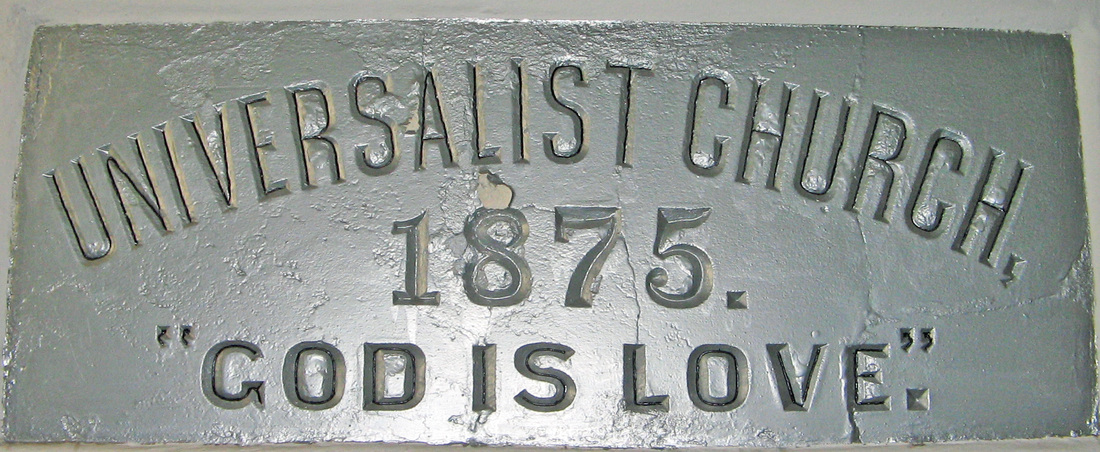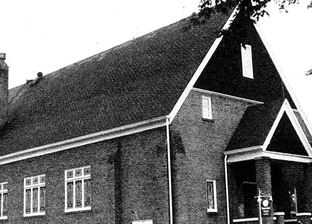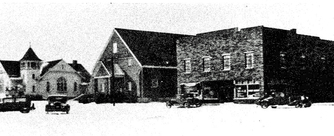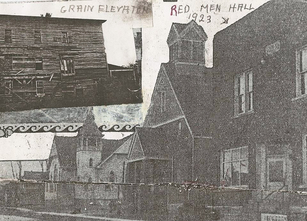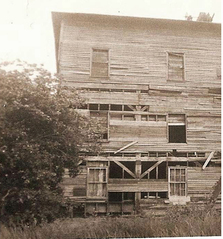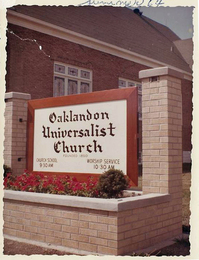Our Congregation's History
|
The Oaklandon Unitarian Universalist (UU) Church has a long and distinctive history. It is the oldest existing church in Marion County still operating in the same location. Also, it is the oldest UU congregation in Indiana and the only one meeting in an historic Universalist Church building.
The history of this congregation is one that is filled with tragedy and set-backs, including two fires, but also a "can-do" optimism and gentle dedication rooted in a loving Universalist spirit. |
|
Key Moments in Oaklandon UU Church History
|
|
The church is located in the Oaklandon Historic District, as recognized by both the national and state Historic Registers.
|
The Little Church that Could: a History of the Oaklandon Unitarian Universalist Church
by Bonnie S. Jones
by Bonnie S. Jones
|
1838-1875 A new congregation is founded and builds its first building Our church was the first Universalist Society in Lawrence Township. It was formed in 1838 and services were originally conducted in different homes. In 1850, the Indian Creek Universalist Society was organized with 25 members and a frame church was erected on our present site (see at right). This was the first church erected in the town of Oakland, which it was called at that time. For one year, the Oaklandon Christian Church held services in our building) Originally, founders of the town of Oaklandon saw a great future for the community because of its location along the railroad and Pendleton Pike. They envisioned a community that would accommodate hundreds of homes, stores, churches, schools, factories, mills, and even exporters and importers. Because of the towering oak trees, the community was originally called Oakland. The name was changed in the early 1880’s to Oaklandon. The rapid growth and rise to prominence envisioned by the town’s founders was frustrated by a series of national events. First, the Gold Rush of 1849 had diverted immigration to the West. Next, the Civil War had slowed new development and finally, the Financial Panic of 1873 stopped the town’s growth completely. By 1880 the founding fathers had resigned themselves to the fact that Oaklandon would be nothing more than a thriving county town linked to Indianapolis by a toll road whose passage took a half day and 60 cents. |
The original church building, built in 1850. The congregation's name at that time was the Indian Creek Universalist Society.
|
|
1875-1920 A new brick building and a new name
By 1875 our church membership had grown to 95 with Sunday school registration of 100. G.W. Stanley was the Sunday School Superintendent. He also taught a singing class. At the time the value of the church property was $1,000. A new brick structure was erected that year (see at right). The bricks were burned by Mr. Gates on the Robert Watson Farm. Wood for burning the brick came from timber donated by John Emory. John offered dinner and a free dance at night for each man who would cut a cord of wood. Several new features were added to the new church including a fully equipped stage that would be used for both church and Oaklandon community functions. During the construction of the church, a storm blew one wall down, making the struggle more difficult for the small band of workers. As ice cream socials did not exist at that time, festivals of various types were held to finance the rebuilding of the wall. Dedicated in 1878, free of debt, the church was considered the finest and the best with the largest membership in Lawrence Township. The Ladies Aid Society was the focal point in the traditional Thanksgiving Fair, which was established in the 1890’s as a one-day holiday festival and bazaar. For several years, the fair lasted three days with an oyster supper and three-act play on Saturday night. It was the largest fund raiser for the church. The annual Thanksgiving Dinner continued until the 2000’s. In 1899 the Universalist Convention issued a Statement (Declaration of Principles) that entitled us to be called a church. At that time we were in great competition for new members with our neighbor next door, the Oaklandon Christian Church. We changed our name that year to the Oaklandon Universalist Church. As Lawrence Township grew, so did the church and after 1915 improvements were necessary to accommodate the Sunday School. Sunday School classes were held for all members of attending families. More people usually attended Sunday School than church worship, morning or evening. Improvements included changing the front entrance, elevating the floor, adding classrooms, a kitchen, and the addition of a large stage, dressing rooms and scenery. The stage served to link the church, school and community through public entertainment, school graduations and public plays. Our church was a vital part of the Oaklandon community. A Young People’s Christian Union, a Men’s Club and the Ladies Aid Society all contributed to the financial support of the church. |
With rapid membership growth, the congregation replaced the original wood structure with a brick building in 1875
By the turn of the century, Oaklandon Universalist Church (above on the left) was a vital part of the Oaklandon community
|
|
1920-1925 Tragedy, and a new building rises from the ashes
In February of 1920 tragedy struck as the ICRM Hall (Red Men) next to the church burned. Our own cherished church caught fire and also burned, leaving nothing but the skeleton-like walls and a small collection of furniture. The community united -- men, women and children -- to rebuild the church. Some cleaned brick; others cleaned away the debris, while others began digging the new basement. Immediately, a campaign was held to raise funds to rebuild. Many people from the area contributed financially. One of the chief sources of inspiration to the disheartened members was the advice and encouragement of Frank Fox. Not a church member, he gave liberally of his time and influences to finance the rebuilding of the church. He donated both material and money which endured him to all who knew him. One very successful means of raising funds was carried on by the Young People’s Class. A brick sale was made by selling printed tags for bricks at the price of one dollar. Letters were sent out all over the United States, which met with a very liberal response. The money was used to buy the lighting fixtures and the young men and their teacher did the wiring. The new building had a basement with a well-equipped kitchen, a large dining room with a fireplace, above which is preserved the stone that once occupied a lofty place on the front of the old building. The stone is inscribed with the sentence, “God is Love.” In addition to a large auditorium, there were choir pits, a large stage, well equipped with scenery and a large balcony. The auditorium was furnished with the pews from the Castleton Church, which had been dormant for a number of years. The balcony chairs were donated by the Beaver Prairie Universalist Church in Newton County Indiana. This was the largest Universalist Congregation in the State of Indiana at that time. Some of the families included well know names such as the McCords, Hamiltons and many others. In November 1923 the debt, with the exception of ten thousand dollars, had been paid. Plans were made to sell bonds to safely and legally cover the ten thousand dollar debt. In 1925 our church had a food stand at the Indiana State Fair in a booth outside the Coliseum. Fried chicken dinners, hamburgers, and hot dogs were served. In 1926 and 1927, a separate building was rented and only fried chicken dinners were served. All food was prepared at the church and taken to the Fair hot, by cars in big jars. |
The first brick building, built in 1875, was destroyed in a fire in 1920
The cornerstone from the original brick building, which was destroyed in a 1920 fire, was saved and placed above the fireplace in the basement in the new building. You can still see the cornerstone today.
|
|
1925-1960 A second tragic fire and the congregation builds its third brick church building--the one you see today Tragedy struck our church again when in the early morning hours of February 13, 1925 a fire broke out in Oaklandon’s business district. Fire apparatus came from Indianapolis and Fortville to fight the blaze. The truck dispatched from nearby Fort Benjamin Harrison unfortunately ran off the road and did not arrive until after the fire was out. Despite the efforts of firefighters and townspeople, the fire destroyed much of the town center, including the Oaklandon Universalist Church. Work began immediately to raise funds and rebuild our church a second time. While gutted by the fire, the walls were saved (as well as the cornerstone in the basement) and the church was rebuilt much as the 1921 church had been. The stage and dressing rooms were preserved, as well as the heavy oak firewall which requires at least two people to operate. For the next 50 years this stage was used by Oaklandon High School and surrounding schools and organizations for plays, events, and graduations and eventually, it became the home of the Oaklandon Civic Theater. In 1926 the rebuilt church was completed -- this is the church building you see today. Friends again proved loyal and with the insurance, the debt remained the same as it was before the 1925 fire. Today this church is recognized as the oldest existing church in Marion County still operating in the same location. The boom in housing construction, which followed the Second World War, finally brought about the discovery of the Oaklandon community. The town, however, developed a virtual split personality between the “old center” and the new subdivisions being built around it. The division weakened the community’s sense of identity. This, coupled with the fact that the town had never incorporated, left it vulnerable at a time when communities were looking for opportunities for expansion. Despite the growth in Lawrence Township population, the development of Geist Reservoir, the addition of Western Electric, Ford and Chrysler plants and the opening of the Finance Center at Fort Benjamin Harrison, the little town of Oaklandon did not thrive. It became lost within the expansion of Lawrence. Although the suburban sprawl from Geist Reservoir and Lawrence increased the population of the Oaklandon area to 2,600, the quaint character of the town became lost. Loss of the Telephone Company, bank, fire station, grocery store and other businesses left the town as just another suburb. But our church remained, and there were several businesses that supported the church with ads in our newsletter. |
After a second fire destroyed the church in 1925, a new building was built in 1926. This is the one you see today.
Here is another view of the newly-built church building in 1926, after fire destroyed the previous one.
|
|
1960-Today: Property expansion and a continued vital religious presence
In 1960 the Universalist Men organized a men’s club again and an important community service project was immediately launched. It consisted of acquiring the properties adjacent to the church to the north and west, razing the large grain elevator and otherwise improving the premises for the general benefit of the community. The initial payment of $1,000 was raised from among the church constituency. They held a campaign within the community for financial and other aid toward. The men’s club made an outstanding community improvement by buying and raising three dilapidated buildings in the center of the village and establishing a large and beautiful lawn around the church. That same year, Helen Cox gave the church money to build an outside sign and flower box in the church yard as a memorial to her mother (see at right). In 2002 the congregation helped to establish the Oaklandon Civic Theater, continuing its legacy of supporting and encouraging the local arts and making use of its historic building, including its unique stage. While many churches have sold buildings and relocated in larger, newer churches in “better” areas, this church has remained a vital part of Oaklandon for over a century. Our members come from as far north as Noblesville, east to Greenfield, south to Johnson County and within the greater Indianapolis area. Historic religious buildings are vital to their communities. They remind us of local history. They exhibit irreplaceable artistry and craftsmanship, and they often provide needed space for community activities and social services, in addition to serving as centers of religious practice. I would like to close with a quote from the Hoosier Universalist newsletter, dated May 15, 1930.
|
Red Men Hall, which was right next to the church building, was purchased and razed in 1960. The adjoining dilapidated grain elevator which was also removed can be seen in the upper left-hand corner above, and also below.
|


